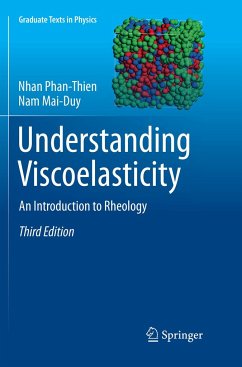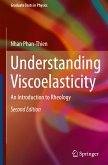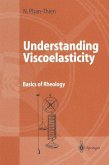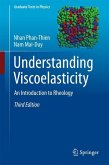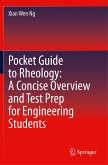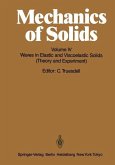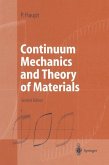This book presents an introduction to viscoelasticity, in particular, to the theories of dilute polymer solutions and dilute suspensions of rigid particles in viscous and incompressible fluids. These theories are important, not just because they apply to practical problems of industrial interest, but because they form a solid theoretical base upon which mathematical techniques can be built, from which more complex theories can be constructed, to better mimic material behaviour. The emphasis of this book is not on the voluminous current topical research, but on the necessary tools to understand viscoelasticity.
This is a compact book for a first year graduate course in viscoelasticity and modelling of viscoelastic multiphase fluids. The Dissipative Particle Dynamics (DPD) is introduced as a particle-based method, relevant in modelling of complex-structured fluids. All the basic ideas in DPD are reviewed.
The third edition has been updated and expanded with new results in the meso-scale modelling, links between the fluid modelling to its physical parameters and new matlab programs illustrating the modelling. Particle-based modelling techniques for complex-structure fluids are added together with some sample programs. A solution manual to the problems is included.
This is a compact book for a first year graduate course in viscoelasticity and modelling of viscoelastic multiphase fluids. The Dissipative Particle Dynamics (DPD) is introduced as a particle-based method, relevant in modelling of complex-structured fluids. All the basic ideas in DPD are reviewed.
The third edition has been updated and expanded with new results in the meso-scale modelling, links between the fluid modelling to its physical parameters and new matlab programs illustrating the modelling. Particle-based modelling techniques for complex-structure fluids are added together with some sample programs. A solution manual to the problems is included.
From the reviews:
"In Understanding Viscoelasticity: Basics of Rheology, Nhan Phan-Thien, who has produced several substantial contributions in rheology over the past three decades, provides a concise account of the behavior of real materials . . . Suitable as a text for a first-year graduate course in viscoelastic materials, the book provides students with some necessary tools to read and better understand technical articles in the field . . . Among the book's many positive attributes are the clear introductory remarks that begin each chapter. Concepts leading to material functions are well introduced and defined. Nice historical tidbits, sprinkled throughout, convey valuable information on scientists of note and the remarkable scientific advances for which they are famous. Homework problems with ample pedagogical and mnemonic value appear at the end of each chapter . . . Understanding Viscoelasticity is a joy to read and will be very useful to motivated students."
PHYSICS TODAY
"In this small textbook a brief introduction into the rheological branch of viscoelasticity is given. ... In contrast to other monographies in rheology, the present one results from lecture notes of a short introductory course ... . some interesting historical notes on the pioneers of rheology are given. The book can be recommended as a first introduction into the matter ... ." (Technische Mechanik, Vol. 25 (2), 2005)
"This book is a good introduction to the theory of viscoelasticity. The author presents the fundamentals of continuum mechanics together with mathematical background in a unified description. ... The book gives a detailed and clear treatment of the subject. Each chapter contains interesting problems. On balance, this is a useful work." (Dorin Iesan, Zentralblatt MATH, Vol. 1036 (11), 2004)
"Suitable as a text for a first-year graduate course in viscoelastic materials, the book provides students with some necessary tools toread and better understand technical articles in the field. ... Among the book's many positive attributes are the clear introductory remarks that begin each chapter. Concepts leading to material functions are well introduced and defined. Nice historical tidbits, sprinkled throughout, convey valuable information ... . Understanding Viscoelasticity is a joy to read and will be very useful to motivated students." (Daniel De Kee, Physics Today, July, 2003)
"In Understanding Viscoelasticity: Basics of Rheology, Nhan Phan-Thien, who has produced several substantial contributions in rheology over the past three decades, provides a concise account of the behavior of real materials . . . Suitable as a text for a first-year graduate course in viscoelastic materials, the book provides students with some necessary tools to read and better understand technical articles in the field . . . Among the book's many positive attributes are the clear introductory remarks that begin each chapter. Concepts leading to material functions are well introduced and defined. Nice historical tidbits, sprinkled throughout, convey valuable information on scientists of note and the remarkable scientific advances for which they are famous. Homework problems with ample pedagogical and mnemonic value appear at the end of each chapter . . . Understanding Viscoelasticity is a joy to read and will be very useful to motivated students."
PHYSICS TODAY
"In this small textbook a brief introduction into the rheological branch of viscoelasticity is given. ... In contrast to other monographies in rheology, the present one results from lecture notes of a short introductory course ... . some interesting historical notes on the pioneers of rheology are given. The book can be recommended as a first introduction into the matter ... ." (Technische Mechanik, Vol. 25 (2), 2005)
"This book is a good introduction to the theory of viscoelasticity. The author presents the fundamentals of continuum mechanics together with mathematical background in a unified description. ... The book gives a detailed and clear treatment of the subject. Each chapter contains interesting problems. On balance, this is a useful work." (Dorin Iesan, Zentralblatt MATH, Vol. 1036 (11), 2004)
"Suitable as a text for a first-year graduate course in viscoelastic materials, the book provides students with some necessary tools toread and better understand technical articles in the field. ... Among the book's many positive attributes are the clear introductory remarks that begin each chapter. Concepts leading to material functions are well introduced and defined. Nice historical tidbits, sprinkled throughout, convey valuable information ... . Understanding Viscoelasticity is a joy to read and will be very useful to motivated students." (Daniel De Kee, Physics Today, July, 2003)

